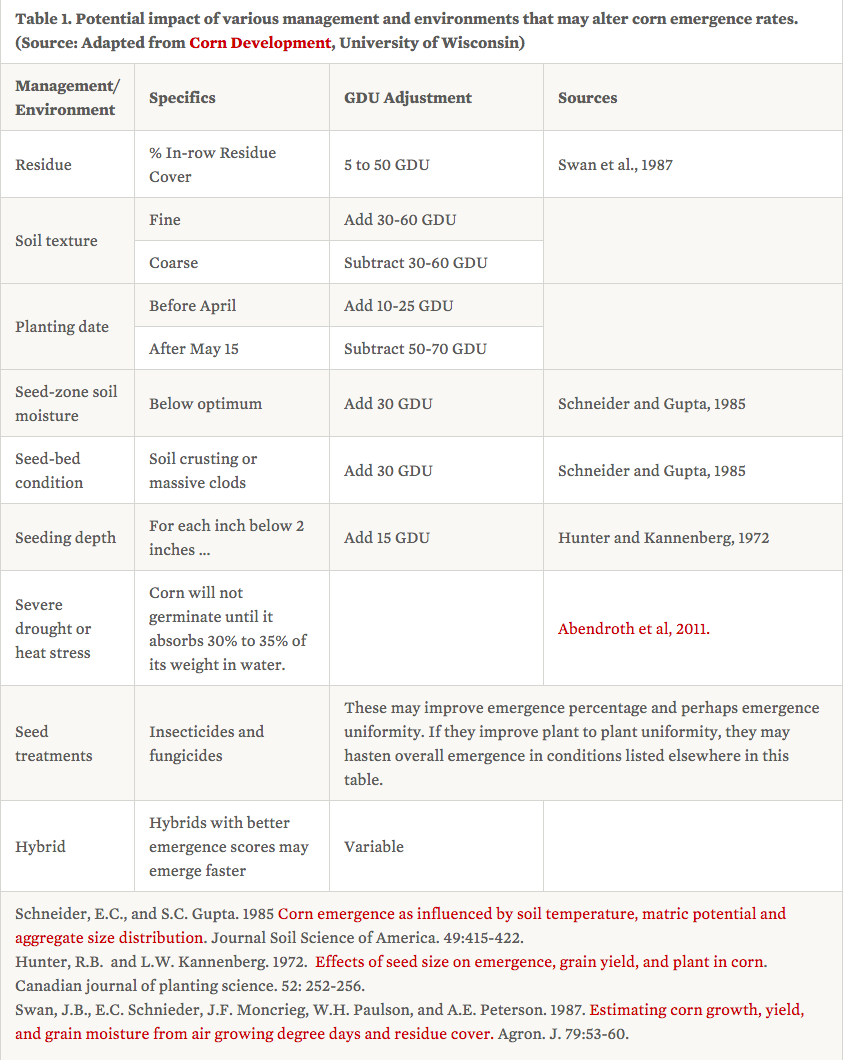Source: University of Nebraska Extension
Many factors affect corn growth and development, especially early in the growing season. One that is not often discussed is how temperature affects days to emergence.
Since corn emergence is directly related to soil temperature — and of course, soil moisture — days to emergence vary, especially when one compares early planting dates to later planting dates. Figure 2 in the Iowa State University Integrated Crop Management article, How Long Will it Take Corn to Emerge, shows the impact of soil temperature on both corn and soybean emergence.
Downsides of Delayed Emergence
First, there is a downside to slower emerging corn. Planting corn into cool soils increases emergence variability, variation in plant sizes and results in a wider spread in development stages. Variability in plant size — whether from cool soil temperatures and delayed emergence or from frost or other factors — will affect plant-to-plant competition and reduce yield.
Growing Degree Units (GDUs)
Growing Degree Days (GDD) and GDUs refer to the same calculation based on air temperature. In the case of corn, the equation is:
GDD or GDU = (Daily Maximum Air Temperature + Daily Minimum Temperature)/2 – 50.
When the maximum air temperature is greater than 86 F, we set the value at 86 F in the equation as the growth rate of corn does not increase beyond 86 F. Likewise, when minimum air temperature is less than 50 F, we set the value equal to 50 F in the equation. The sum of daily GDUs or cumulative GDUs for corn emergence is approximately 90-120.
As a baseline for GDUs required for corn emergence, colleagues at the University of Wisconsin report that 125 GDUs are required for emergence. Based on research in Iowa, corn typically required 90-120 Growing Degree Days (GDD) from planting to emergence. This range assumes adequate soil moisture and will vary with planting depth, tillage system and residue cover.
Adjustments for Management and Environmental Factors
GDUs are based on air temperature and not the soil temperature that impacts emergence. For this reason, several research reports document specific situations where adjustments may be made to help fine-tune expected emergence dates (Table 1) based on GDUs determined from air temperatures. 
In Nebraska and in the upper Midwest, the U2U decision support tool for corn GDD can be used to determine local accumulated GDDs based on planting date. As a rule of thumb, if 120 GDD have accumulated since planting and seedlings haven't emerged, check the condition of planted seed. Assess whether replanting is necessary.






Post a comment
Report Abusive Comment